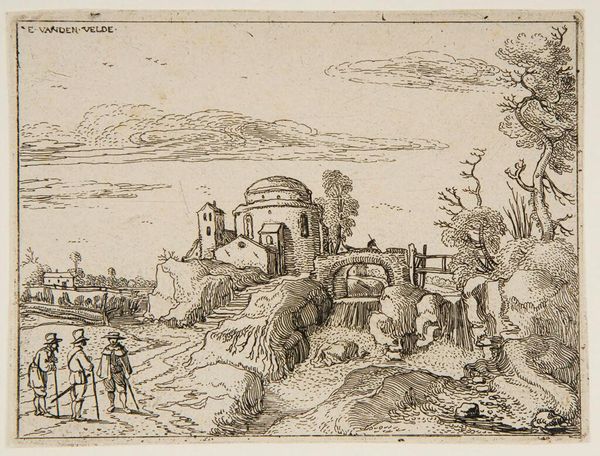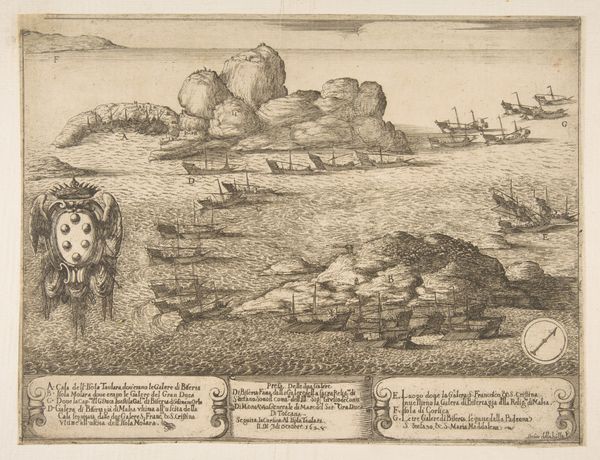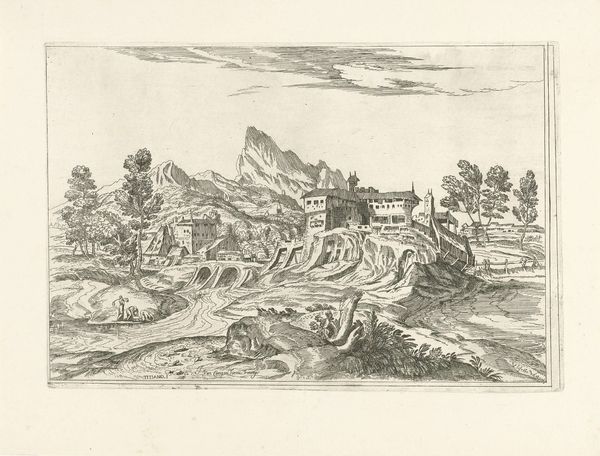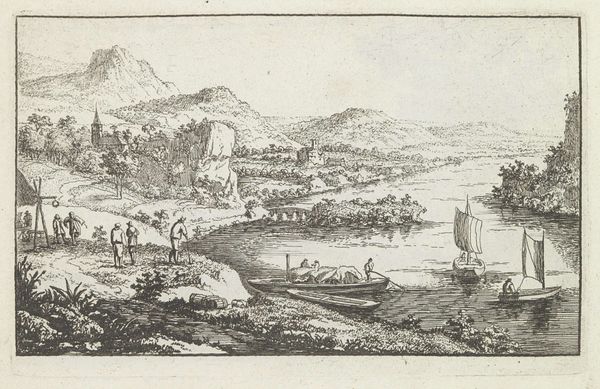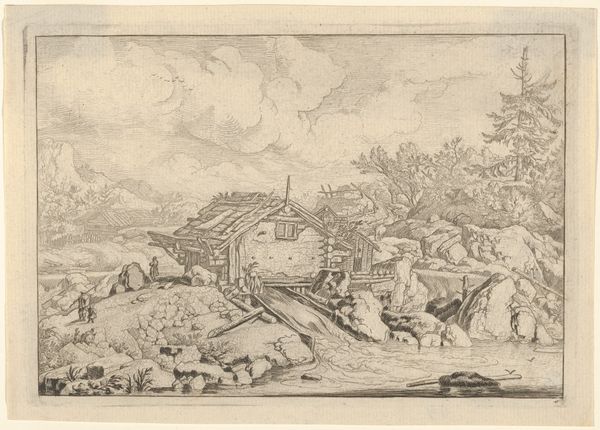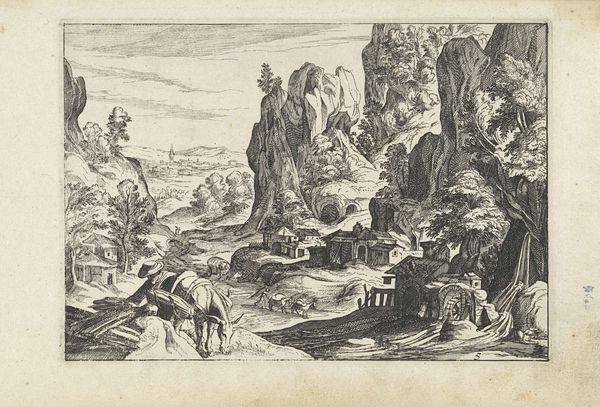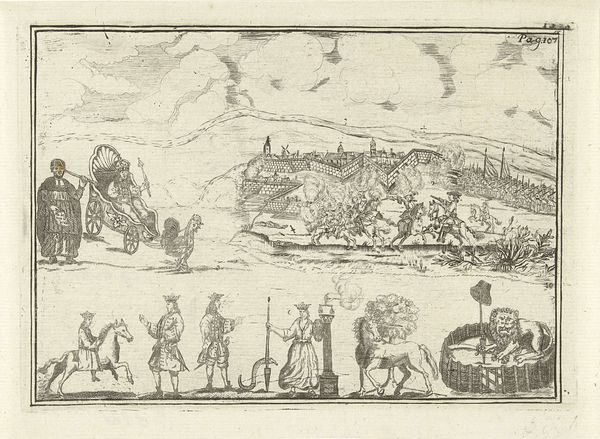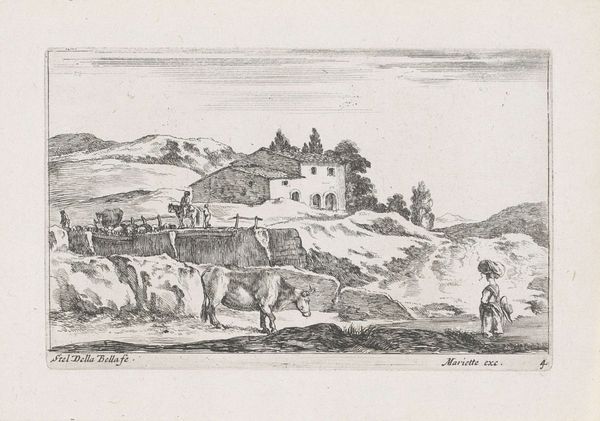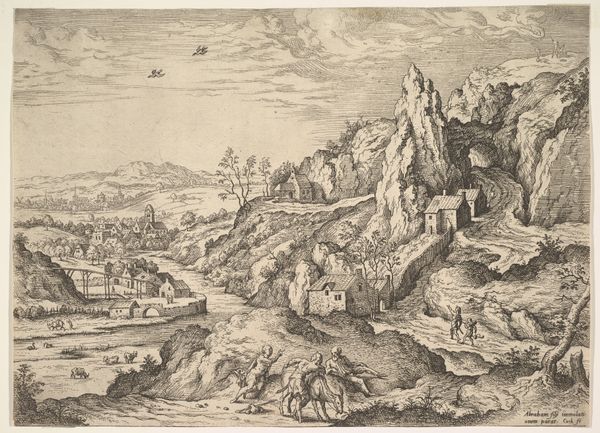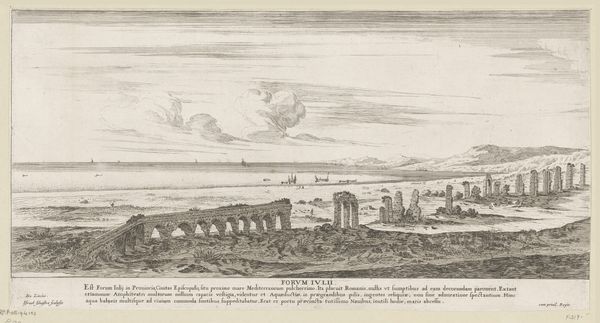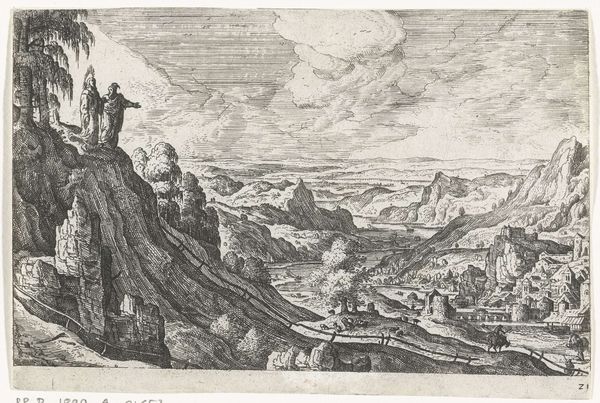
print, etching, engraving
#
baroque
#
dutch-golden-age
# print
#
pen sketch
#
etching
#
old engraving style
#
landscape
#
waterfall
#
engraving
Dimensions: height 101 mm, width 135 mm
Copyright: Rijks Museum: Open Domain
Curator: This print, currently residing in the Rijksmuseum, is entitled "Brug over waterval naast rondbouw met kapel", dating to about 1615. Esaias van de Velde is credited as its creator. Editor: Immediately striking. There's an ordered complexity to it; the hatching and cross-hatching build depth, yet it retains a lightness, a sketched quality. Curator: It exemplifies the Dutch Golden Age landscape tradition, a burgeoning interest in the natural world seen through the lens of cultural identity. The waterfall, bridge, round building, and chapel, likely symbolize something beyond their simple forms. The chapel suggests spiritual contemplation, maybe. Editor: It’s visually intriguing how the dome of the building mirrors the shapes in the clouds. Van de Velde guides the eye cleverly. What about those figures in the foreground, on the left? They appear almost oblivious to the picturesque view. Curator: Exactly! Their inclusion serves to emphasize scale, placing humanity within the grandeur of the natural and built environment. They could be travelers, or perhaps representatives of a certain class, reinforcing social hierarchy within the scene. Also, note how the bridge is guarded by someone—are they warding it, collecting taxes? Editor: Or, formally speaking, those figures on the left direct us into the image. Note also how texture is built here— the etching lines become shorter and closer to give a darker impression, such as beneath the bridge’s arch. Curator: The etching itself speaks to broader European printmaking trends. Van de Velde’s mastery translates into detailed landscape available for wider dissemination, shaping perceptions and romanticising views. What does this location recall? Is it familiar or an invention? Editor: We’ll likely never know with any certainty. Curator: But it prompts us to reflect. What traces linger in this space that inform the here and now? What does the composition call up for us in cultural memory? Editor: And I find, through van de Velde's masterful application of the medium, it opens an imaginative portal regardless.
Comments
No comments
Be the first to comment and join the conversation on the ultimate creative platform.
